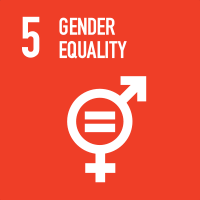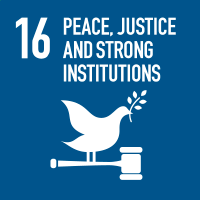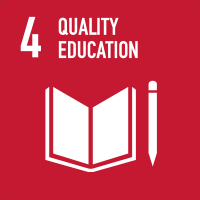Studying at the University of Verona
Here you can find information on the organisational aspects of the Programme, lecture timetables, learning activities and useful contact details for your time at the University, from enrolment to graduation.
Study Plan
This information is intended exclusively for students already enrolled in this course.If you are a new student interested in enrolling, you can find information about the course of study on the course page:
Laurea magistrale in Storia delle Arti - Enrollment from 2025/2026The Study Plan includes all modules, teaching and learning activities that each student will need to undertake during their time at the University.
Please select your Study Plan based on your enrollment year.
1° Year
| Modules | Credits | TAF | SSD |
|---|
1 module among the following1 module among the following2° Year activated in the A.Y. 2024/2025
| Modules | Credits | TAF | SSD |
|---|
4 modules among the following| Modules | Credits | TAF | SSD |
|---|
1 module among the following1 module among the following| Modules | Credits | TAF | SSD |
|---|
4 modules among the following| Modules | Credits | TAF | SSD |
|---|
Legend | Type of training activity (TTA)
TAF (Type of Educational Activity) All courses and activities are classified into different types of educational activities, indicated by a letter.
Performing Arts and Media (2024/2025)
Teaching code
4S008068
Teacher
Coordinator
Credits
6
Language
Italian
Scientific Disciplinary Sector (SSD)
L-ART/05 - PERFORMING ARTS
Period
CuCi 2 A, CuCi 2 B
Courses Single
Authorized
Learning objectives
The course aims to provide a basic knowledge of the main artistic techniques and their restoration methodologies; the students will also acquire skills for analysis of the conservative state of works of art.
Prerequisites and basic notions
Basic knowledge of the history of western theatre (United States and Europe) of the second half of the Twentieth century. Students who have not already taken an exam in theatre history are advised to read chapters 1-3 of the volume by M. De Marinis, 'Il Nuovo Teatro', Bompiani, Milan 1987.
Program
The collaboration between theatre and media in the diffusion of the American Avant-garde (1958-1983).
The class will focus on the history of experimental theatre in New York City, with a particular focus on collaborations with artists working in the fields of visual arts, music and cinema. It will be illustrated how the underground theatre circuit has made use of the support of equally alternative communication channels - mimeos, independent newspapers and experimental cinema - through the introduction of the most influential groups and theatres, since the early years.
In the second part of the course, some exemplifying cases of the theater-media relationship in the Avant-garde period will be analysed.
Bibliography:
- Simona Brunetti, Monica Cristini, Peter Eckersall, a cura di, Il Nuovo Teatro e l'Avanguardia Teatrale. Incontri e influenze oltre i confini (1948-1981), Bari, Edizioni Di Pagina 2024.
- Maddalena Mazzocut-Mis ed Elena Tavani, 'Estetica dello spettacolo e dei media', Edizioni Universitarie di Lettere Economia Diritto, Milano 2012: capitoli 1 'Spettacolo e Spettatore'; 5 'Estetica del teatro. Pagina e scena nel teatro del Novecento'; 7 'Estetica della musica. Suoni e immagini per uno spettatore'
- Stefan Brecht, 'Nuovo Teatro Americano 1968-1973', Bulzoni, Roma1974 da pagina 144 a pagina 212: 'Teatro Nero'; 'Naked Restaurant di Warhol e Viva'; 'Il Principe Costante di Grotowski'
- Marco De Marinis, Il Nuovo Teatro 1947-1970, Bompiani, MIlano1987: capitoli 1 'Avanguardie senza teatro'; 2 'Living Theatre'; 3 'Qualcosa che deve succedere: un happening'; 4 'Il Teatro Laboratorio di Grotowski'; 6 'Il nuovo teatro americano fra sperimentazione e politica.
- Lorenzo Mango, 'La Nuova critica e la recitazione' "Acting Archives Review", II, 3, Maggio 2012 (online in Open Access)
- Monica Cristini, 'L'unicità della drammaturgia Off-Off Broadway', "Il Castello di Elsinore", n.86, 2022 (online in Open Access)
Additional papers will be made available on Moodle during the course of the lectures.
Non-attending students may agree an examination bibliography with the professor.
Bibliography
Didactic methods
Lectures with the support of iconographic documents and videos, reviews in English and in the Italian translation provided by the teacher.
Learning assessment procedures
The final exam consists in the drafting of a paper of about 10 pages. The thesis must be focused on the analysis of the intervention of the media on the occasion of a particular artistic event.
The topic must be agreed with the teacher and can be chosen from those presented during the lessons or concern another focus.
The bibliography indicated and the materials provided during the lessons will support the drafting. The dissertation must be presented during an oral exam, during which the study of the exam bibliography will be verified.
Evaluation criteria
Evaluation of the written paper (presentation of the chosen topic and writing). Oral interview with evaluation expressed by a mark out of thirty.
Criteria for the composition of the final grade
The final evaluation will be determined by the evaluation of the written paper (50%) and by the answers to the questions on the texts indicated in the exam bibliography (50%).
Exam language
Italiano



